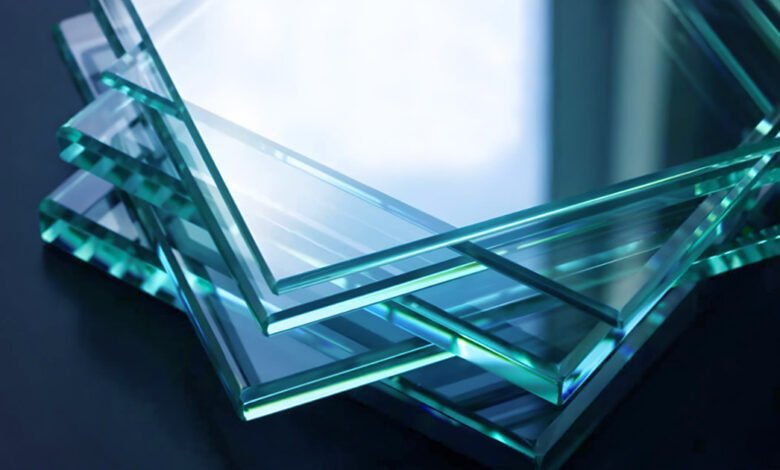The Fascinating World of Glass: A Transparent Marvel of Human Innovation

When you look around your home, office, or any modern building, you’ll quickly realize how vital glass has become in our everyday lives. From the sleek smartphone in your pocket to the windows that let sunlight into your room, glass is everywhere. But have you ever stopped to think about how this transparent material came to be, or why it’s so essential to our world? In this article, we’ll dive deep into the world of glass — its history, types, uses, and future potential. Let’s explore what makes this simple-looking material so extraordinary.
A Brief History of Glass
Glass has a surprisingly ancient history, with its origins dating back thousands of years. Archaeological evidence suggests that the first man-made glass appeared in Mesopotamia and Egypt around 3500 BCE. Back then, it was used mainly for decorative items like beads and amulets rather than practical purposes. It wasn’t until around 1500 BCE that glass vessels began to appear in Egypt, serving both as functional containers and ornamental pieces.
One of the most significant breakthroughs in the history of glass came during the Roman Empire. Roman glassmakers developed new techniques, including glass blowing, which made it possible to create glass containers of various shapes and sizes quickly and efficiently. This innovation not only expanded the range of glass items but also made glass more accessible to ordinary people, no longer reserved for royalty or religious artifacts.
During the Middle Ages, glassmaking knowledge and craftsmanship continued to evolve, particularly in places like Venice. Venetian glassmakers became famous for their intricate and delicate designs, often regarded as the finest in the world. Even today, Murano glass from Venice is celebrated for its beauty and craftsmanship, a testament to centuries of skill and tradition.
Different Types of Glass and Their Unique Properties
While most of us think of glass as a single type of material, it actually comes in various forms, each with distinct properties and applications. The most common type is soda-lime glass, which is used in windows, bottles, and everyday glassware. It’s made from a mixture of sand, soda (sodium carbonate), and lime (calcium oxide), melted together at high temperatures.
Another well-known variety is tempered glass, which is heat-treated to increase its strength and safety. If it breaks, it shatters into small, blunt pieces rather than sharp shards, making it ideal for use in car windows, shower doors, and even smartphone screens. The strength and durability of tempered glass come from its unique manufacturing process, which involves rapid cooling after heating.
Then there’s borosilicate glass, recognized for its excellent resistance to thermal shock. Unlike standard glass, it can withstand rapid temperature changes without cracking, which is why it’s commonly used in laboratory glassware, kitchen items like measuring cups, and even high-end cookware. Brands like Pyrex have built their reputations on the reliability of borosilicate glass, which offers both strength and clarity.
The Many Uses of Glass in Modern Society
Glass plays a crucial role in various industries and aspects of modern life, far beyond what most people might realize. In architecture, glass is used extensively in building facades, windows, and interior partitions. Its transparency allows natural light to flood into buildings, reducing the need for artificial lighting and creating a sense of openness and connection with the outdoors.
In the automotive sector, glass is essential not just for windshields and windows but also for mirrors, headlights, and display screens. Advanced laminated and tempered glass ensures passenger safety, while innovations like smart glass can automatically tint to reduce glare and heat, improving driving comfort.
Glass is also indispensable in the technology sector. Modern smartphones, tablets, and laptops rely on ultra-thin, highly durable glass for touchscreens and displays. Specialty glasses like Gorilla Glass have been developed to resist scratches and damage while maintaining crystal-clear visuals. Additionally, optical glass is used in camera lenses, microscopes, and telescopes, enabling everything from family photos to astronomical discoveries.
The Art and Aesthetics of Glass
Beyond its practical applications, glass has long held a place in the world of art and design. From stained glass windows in medieval cathedrals to contemporary glass sculptures, artists have exploited the material’s transparency, color, and form to create visually stunning pieces. The way glass interacts with light — refracting, reflecting, and sometimes distorting it — makes it a unique medium for artistic expression.
Stained glass, in particular, represents one of the most iconic art forms associated with glass. These colorful panels, often depicting religious scenes or intricate patterns, have adorned churches and cathedrals for centuries. The play of sunlight through these colored panes can transform interiors into vibrant, almost otherworldly spaces.
In modern times, glass art has expanded into new territories. Glass blowing, fusing, and casting techniques allow artists to create sculptures, installations, and functional art pieces. Renowned glass artists like Dale Chihuly have brought glass into contemporary art galleries and public spaces, proving that this ancient material still has the power to captivate and inspire.
The Environmental Impact of Glass and Its Recyclability
Like many industrial materials, glass production has an environmental footprint. The manufacturing process involves high temperatures and significant energy consumption. Additionally, raw materials like silica sand must be mined, impacting ecosystems. However, one of glass’s most redeeming qualities is its recyclability. Unlike plastics, glass can be recycled indefinitely without losing its quality or purity.
Recycled glass, known as cullet, is mixed with raw materials to create new glass products. This process reduces the need for virgin resources, lowers energy consumption, and cuts greenhouse gas emissions. In many countries, glass recycling programs are well-established, with bottles and jars collected, sorted, and processed for reuse.
Efforts are also being made to make glass production more sustainable. Innovations like lightweight glass packaging reduce the amount of material used, while improvements in furnace technology help cut emissions. As environmental concerns grow, glass’s recyclability and long lifespan position it as a more eco-friendly alternative to single-use plastics.
The Future of Glass: Smart Glass and Beyond
As technology continues to evolve, so too does glass. One of the most exciting developments in recent years is smart glass, which can change its properties based on external conditions or user control. For example, electrochromic glass can darken or become opaque at the touch of a button, offering energy efficiency and privacy without the need for blinds or curtains.
Another innovation is self-cleaning glass, which uses a special coating to break down dirt and grime when exposed to sunlight, allowing rainwater to wash it away. This technology is particularly useful for high-rise buildings and hard-to-reach windows, reducing maintenance costs and improving aesthetic appeal.
In the realm of electronics, flexible glass is making waves. Used in foldable smartphones and wearable devices, this ultra-thin glass can bend without breaking, opening up new possibilities for product design. As research and development continue, we can expect even more groundbreaking uses for glass in fields like renewable energy, healthcare, and aerospace.
Conclusion: A Material That Shaped and Continues to Shape the World
Glass is one of those materials that quietly underpins our daily lives while also holding an enduring allure. From ancient beads to cutting-edge smart windows, it has continuously evolved to meet human needs and desires. Its combination of beauty, functionality, and versatility makes it an indispensable part of modern society.
As we look to a future where sustainability and innovation are increasingly important, glass stands out not only for its aesthetic and practical qualities but also for its potential to address contemporary challenges. Whether it’s in the form of recycled bottles, towering skyscrapers, or futuristic gadgets, glass will undoubtedly continue to play a vital role in shaping our world.



